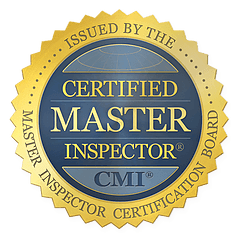OIL TANK SWEEP
Oil Tank Sweep Inspection Hudson & Bergen County NJ
Many homes in the Northeast have underground oil tanks that require an oil tank inspection. Prior to when municipalities installed natural gas lines, Most homes used furnaces that relied on fuel oil supplied from a tank. Due to their size and unsightliness, it was common practice to bury oil tanks underground were common from the 1930s to the 1980s.
Let’s look more closely at why it’s important to sweep for underground oil tanks, which can become problematic for homeowners.
It’s important to know if the home you’re buying or selling has an older underground oil tank. These oil tanks were made of bare steel which corrodes over time. When the tank’s structure weakens, oil can leak out into the surrounding soil and groundwater, making the property an environmental hazard. If such an incident occurs and your tank leaks, you can expect to pay tens of thousand of dollars for the cleanup process. Underground oil tanks could also rust to the point of collapse and lead to a sinkhole in the yard.
The type of construction or the age of a property will determine how a building or space is inspected, also the criteria by which it is judged. ‘Client need’ should determine any specific issues to be addressed, as well as the degree to which it is inspected. Inspections may be comprehensive or specific, for instance simply inspecting the structure of a roof; whereas, a comprehensive building inspection might include all technical facets of the building. For instance, Building Structure, Roofing, Attic, Major Mechanical, Electrical, Plumbing, Heating & A/C Unit might be inspected.
What Is An Oil Tank Sweep?
FREE QUOTE
Buying or selling a home with a buried oil tank raises concerns on both sides of the table. Full disclosure and investigation of an oil tank is necessary to ensure that it is known that the tank is or has not leaked.
When questions arise regarding did a house ever have oil heat, a professional inspection of the property can be necessary. Depending on the age of a home, oil heat may have been utilized. Many homes first started on coal and then progressed to oil and then to natural gas.
Finding tanks is not always easy, but professionals can look for signs that a tank was or is present. Walking inspections of a property can be combined, with metal detector sweeps and ground penetrating radar (GPR) to locate BOTH buried tanks as well as graves or excavations where tanks were once located.

Why Are Oil Tank Sweep Inspections Necessary?
Well let’s say you decide to sell the house one day. You put the house on the market and get an offer. Well guess what your buyer is going to do. Correct, he is going to do the tank sweep you decided was unnecessary. And what if he finds a tank?
Now YOU have to dig it up and test for a leak, or you can’t sell the house. And if you find a leak, which is quite likely all these years later with the tank deteriorating underground, YOU will have to remediate it to the tune of thousands to tens of thousands to hundreds of thousands of dollars. Game over. You get to die in the house or walk away from it.
About Villa Home Inspections | Weehawken | Hudson & Bergen County NJ

If you are renting, buying or selling a home, allow Villa Home Inspections to give you the peace of mind you deserve. We bring a detail-oriented, educated, smart and experienced approach to all our Weehawken, Hudson County, and Bergen County NJ area Oil Tank Sweep Inspections.
We also offer certified Home Inspections, Commercial Building Inspections, Mold Inspections, Termite Inspections, Pre-Purchase Inspections, Pre-Rental Inspections, Pre-Listing Inspections, Condo Inspections, Townhouse Inspections, and Radon Inspections.
SERVICE AREAS
Jersey City, Hoboken, Bayonne, North Bergen, Union City,
West New York, Secaucus, Kearny, Weehawken, Harrison,
and more!
Fort Lee, Edgewater, Bergenfield, Englewood, Teterboro,
East Rutherford, Englewood Cliffs, Ridgewood, Cliffside Park, Fairview,
and more!



